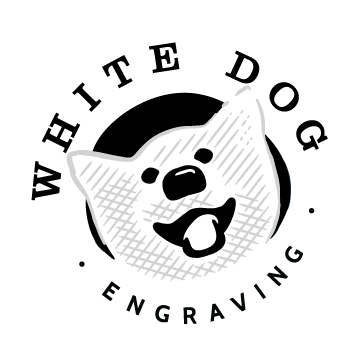Behind the Scenes: How Laser Engraving Works
Laser engraving has revolutionized the world of customization, manufacturing, and design. From personalized gifts and branded promotional items to industrial marking and intricate artwork, this technology enables high precision, durability, and speed. But have you ever wondered what happens behind the scenes? How does a laser engraver transform a digital design into a detailed mark on wood, metal, glass, or plastic? Let's peel back the curtain on how laser engraving works.
What Is Laser Engraving?
Laser engraving is a subtractive manufacturing process that uses a focused beam of light (a laser) to remove material from a surface, creating a permanent mark. Unlike printing or painting, engraving is durable and resistant to wear, weather, and chemicals. It's widely used for decorative and functional applications, from nameplates and trophies to barcodes and circuit boards.
Step 1: Creating the Design
The process begins with a digital design file, usually created using graphic design software like Adobe Illustrator or CorelDRAW. The file is converted into a format the engraving machine can interpret—often a vector file such as SVG, DXF, or AI. This design dictates the path, depth, and intensity of the engraving.
Step 2: Choosing the Material
Laser engraving works on various materials, including wood, acrylic, glass, leather, metal, and even stone. However, different materials respond to lasers in unique ways. For example, CO₂ lasers are excellent for organic materials like wood and leather, while fiber lasers are better suited for metals. Material selection plays a significant role in determining speed, power, and frequency settings.
Step 3: Machine Setup
Once the material is placed on the engraving bed, the machine must be calibrated. This involves focusing the laser beam, usually with the help of an auto-focus sensor or manual adjustment, to ensure sharp, clean results. The laser's speed, power, and frequency are then set based on the material and the complexity of the design.
Step 4: Engraving in Action
When the job begins, the laser beam is emitted from a tube and directed through a series of mirrors and lenses. These components concentrate the beam into a precise point on the material's surface. The laser's energy causes the material to vaporize instantly, creating a clean cut or mark. Since no physical contact occurs, the machine has minimal wear and tear, and the results are highly consistent.
The engraving process can be raster-based, where the laser moves line by line like an inkjet printer, or vector-based, following the path of lines and curves. Raster engraving is ideal for photographs and shading, while vector engraving excels with text and outlines.
Step 5: The Finishing Touches
Once engraving is complete, the piece may undergo finishing steps like cleaning off debris, applying sealants, or polishing. In some cases, color-filling is added to enhance contrast and readability.
Contact Us
Laser engraving is a fascinating blend of art and science. By harnessing the power of light, this technology can produce precise, intricate designs with incredible speed and consistency. Whether customizing a one-of-a-kind gift or marking thousands of industrial components, laser engraving ensures your message lasts—etched in time.
Learn more about the DFW area engraving services that we can offer you by calling us at (972)848-7790 or click here!
